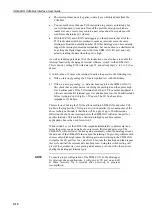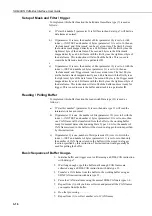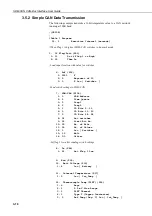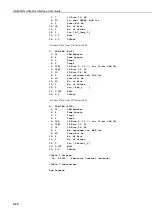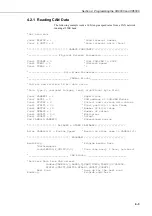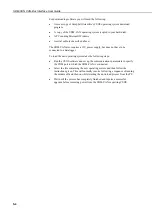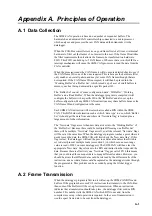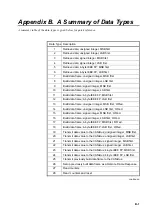
Section 4. Programming CRBasic
Dataloggers to use the SDM-CAN
This chapter describes how to program the CR5000/CR9000X and older CR9000 dataloggers,
using CRBASIC language, to control the SDM-CAN interface. Similar principles can be
followed for newer CRX000 dataloggers that include the SDM-CAN instruction in their
operating system.
4.1 General Principles
Some newer dataloggers use the CRBASIC programming language. CRBASIC
incorporates an instruction which is virtually identical to P118, described in
Section 3. To avoid duplication this section of the manual simply references the
relevant paragraphs in that section. For this reason you are advised to read section
three in its entirety to gain a full understanding of all the general principles and
parameter settings.
Currently neither the CR5000, CR9000X nor CR9000 support interrupt driven
events as described above. However, with the extra speed of these dataloggers, a
similar function can be achieved by polling a digital input and only executing the
instructions required when the port is high. The consequences of doing this in
either the slow or fast tables needs to be considered, especially when trying to
synchronise this data with analogue measurements.
4.1.1 High Speed Block Mode
Operating system Version 3 supports a new high speed block mode for SDM
communication that allows much faster data transfers to the logger. This was
implemented for the CR9000 and CR5000 to allow users to run a program at more
than 200Hz with the SDM-CAN. It gives a 5 fold improvement in performance
over normal mode. Block mode operation is activated by using data types 65 to
70; these are the block mode equivalents of data type’s 1 to 6. When block mode
is active then all CAN data is collected at the beginning of the scan in parallel
with analogue measurements. There are a number of restrictions when using block
mode. There is a limit of 128 values that can be read in total. Other restrictions are
logger specific. On a CR9000 - firstly you can only have one differently addressed
SDM-CAN in each scan unless all other differently addressed SDM-CAN’s are
using normal mode data types 1 to 6. Secondly you cannot use conditional
statements with SDM-CAN instructions which are enabled for block mode.
Restrictions for use with the CR9000X/CR5000 are that you must keep all block
mode instructions together and not intermix normal mode instructions within the
group of block mode instructions. You can however put normal mode instructions
in front or after the group of block mode instructions. You cannot use conditional
statements on either normal or block mode SDM-CAN instructions.
Time to execute block mode for a CR9000 in milliseconds with maximum bus
speed `SDMSpeed(0)’ is approximately = 1.50 + 0.1 * n bytes of data.
Time to execute block mode for a CR9000 in milliseconds with default bus speed
is approximately = 2.07 + 0.207 * n bytes of data.
Time to execute block mode for a CR5000 in milliseconds with maximum bus
speed `SDMSpeed(12)’ is approximately = 1.60 + 0.108 * n bytes of data.
4-1






